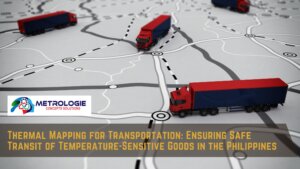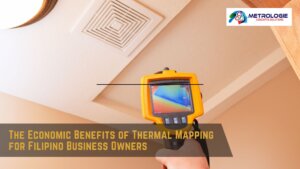Introduction
Overview of Thermal Mapping Solutions
Thermal mapping solutions are essential tools in modern logistics and cold chain management. These systems use advanced technology to monitor and control temperature-sensitive products during storage and transportation, ensuring their quality and safety. In the Philippines, where climate conditions can significantly impact temperature-sensitive goods, the importance of robust thermal mapping solutions cannot be overstated.
Importance of Thermal Mapping in Logistics
Logistics involves the meticulous management of the flow of goods from origin to destination. For products that are sensitive to temperature variations, such as pharmaceuticals, food, and chemicals, thermal mapping is crucial. It provides real-time data and analytics, enabling logistics managers to make informed decisions and maintain optimal conditions throughout the supply chain.
Significance in Cold Chain Management
Cold chain management specifically refers to the handling of products that require a controlled temperature environment from production to consumption. Effective cold chain management ensures that products such as vaccines, dairy, and frozen foods remain safe and effective. Thermal mapping plays a pivotal role in maintaining these conditions, providing visibility and control over the entire process.
Relevance in the Philippines’ Context
In the Philippines, where tropical weather poses significant challenges, thermal mapping solutions are particularly relevant. The country’s logistics industry must navigate high temperatures and humidity levels, which can compromise the integrity of temperature-sensitive goods. Implementing robust thermal mapping solutions helps mitigate these risks, ensuring that products reach consumers in optimal condition.
Background Information
Definition and Concept of Thermal Mapping
Thermal mapping involves the use of sensors and data loggers to monitor and record temperature variations within a specific area or during transportation. The collected data is analyzed to identify hotspots and ensure that temperature-sensitive goods are stored and transported within the required temperature ranges.
Historical Development of Thermal Mapping Solutions
The concept of thermal mapping has evolved significantly over the years. Initially, it involved manual temperature monitoring, which was labor-intensive and prone to errors. With advancements in technology, thermal mapping has become more sophisticated, incorporating automated sensors, real-time data logging, and advanced analytics.
Evolution of Cold Chain Management
Cold chain management has also undergone significant changes. From rudimentary methods of keeping products cool using ice and basic refrigeration, the industry has advanced to incorporate state-of-the-art refrigeration systems, real-time monitoring, and comprehensive thermal mapping solutions. These developments have vastly improved the efficiency and reliability of cold chain logistics.
Technical Specifications
Components of Thermal Mapping Systems
A typical thermal mapping system comprises several key components:
- Sensors: Used to measure temperature at various points within a storage or transportation unit.
- Data Loggers: Devices that record the temperature data collected by the sensors.
- Software: For analyzing the data and generating reports.
- Alerts: Systems to notify personnel of any temperature deviations.
Types of Sensors Used
Various types of sensors are employed in thermal mapping, including:
- Thermocouples: Known for their wide temperature range and durability.
- Resistance Temperature Detectors (RTDs): Highly accurate sensors commonly used in sensitive applications.
- Thermistors: Offer high precision within a limited temperature range.
- Infrared Sensors: Used for non-contact temperature measurements.
Data Logging and Analysis Tools
Data loggers capture temperature data at regular intervals. This data is then analyzed using specialized software to identify patterns, anomalies, and trends. Advanced tools offer real-time data visualization, making it easier to monitor conditions and respond to issues promptly.
Integration with Existing Systems
Modern thermal mapping solutions can be integrated with existing logistics and supply chain management systems. This integration enables seamless data flow and enhances the overall efficiency of cold chain management.
Applications
Use in Pharmaceutical Logistics
Thermal mapping is critical in the pharmaceutical industry, where temperature-sensitive products like vaccines, biologics, and medications require stringent temperature control. Ensuring these products remain within prescribed temperature ranges is essential for their efficacy and safety.
Food and Beverage Industry Applications
In the food and beverage industry, thermal mapping ensures that perishable goods such as dairy, meat, and frozen foods are stored and transported under optimal conditions. This prevents spoilage, maintains quality, and extends shelf life.
Applications in Chemical Transportation
Chemical products, particularly those that are volatile or reactive, often require specific temperature conditions. Thermal mapping helps maintain these conditions, ensuring the safety and stability of the products during transportation.
Usage in Biological Sample Transport
Transporting biological samples for research or medical purposes necessitates precise temperature control. Thermal mapping ensures that samples remain viable, which is crucial for accurate testing and research outcomes.
Applications in Retail Supply Chain
Retailers dealing with temperature-sensitive goods, such as fresh produce and frozen products, rely on thermal mapping to maintain product quality from the supplier to the consumer. This helps build consumer trust and ensures regulatory compliance.
Benefits
Ensuring Product Quality and Safety
Thermal mapping is instrumental in maintaining the quality and safety of temperature-sensitive products. By continuously monitoring and controlling temperature conditions, it prevents spoilage, contamination, and degradation, ensuring products reach their destination in optimal condition.
Enhancing Operational Efficiency
By providing real-time data and insights, thermal mapping enhances operational efficiency. It allows logistics managers to quickly identify and address temperature deviations, reducing downtime and improving the overall flow of goods.
Reducing Wastage and Losses
Effective thermal mapping minimizes wastage and losses by ensuring that products are stored and transported under optimal conditions. This not only reduces financial losses but also contributes to sustainability by minimizing food and product waste.
Compliance with Regulatory Standards
Many industries are subject to stringent regulatory standards for temperature control. Thermal mapping helps businesses comply with these regulations, avoiding fines and ensuring that products meet safety and quality standards.
Challenges and Limitations
Technical Challenges
Implementing thermal mapping systems can present technical challenges, such as ensuring sensor accuracy and reliability. Calibration and maintenance of sensors are crucial to obtaining accurate data.
Cost Implications
The cost of setting up and maintaining thermal mapping systems can be significant, especially for small and medium-sized enterprises. However, the long-term benefits often outweigh the initial investment.
Implementation Barriers
Businesses may face barriers in implementing thermal mapping solutions, such as resistance to change, lack of technical expertise, and integration with existing systems. Overcoming these barriers requires careful planning and support.
Maintenance and Calibration Issues
Regular maintenance and calibration of sensors are essential to ensure accurate temperature monitoring. This can be resource-intensive and may require specialized skills and equipment.
Latest Innovations
IoT and Smart Sensors
The integration of the Internet of Things (IoT) and smart sensors has revolutionized thermal mapping. These technologies enable real-time monitoring and remote management, providing unprecedented visibility and control over temperature conditions.
Real-Time Monitoring Solutions
Advancements in real-time monitoring solutions allow businesses to track temperature conditions continuously. This enables prompt responses to any deviations and helps maintain the integrity of temperature-sensitive products.
AI and Machine Learning in Thermal Mapping
Artificial Intelligence (AI) and Machine Learning (ML) are being increasingly used in thermal mapping to analyze large datasets and predict potential issues. These technologies enhance the accuracy and efficiency of temperature monitoring.
Blockchain Integration
Blockchain technology is being explored for its potential to enhance transparency and traceability in thermal mapping. By providing an immutable record of temperature data, blockchain can help ensure the authenticity and integrity of temperature-sensitive products.
Future Prospects
Predicted Trends in Thermal Mapping Technology
The future of thermal mapping technology is likely to see continued advancements in sensor technology, data analytics, and integration capabilities. Emerging trends include the use of more sophisticated sensors, enhanced data visualization tools, and greater automation.
Future of Cold Chain Management
The cold chain management industry is expected to grow, driven by increasing demand for temperature-sensitive products. Innovations in thermal mapping will play a critical role in meeting this demand, ensuring efficient and reliable cold chain operations.
Potential Impact on the Logistics Industry
Thermal mapping solutions are set to have a significant impact on the logistics industry, enhancing the efficiency, reliability, and safety of temperature-sensitive goods transportation. This will benefit various sectors, including pharmaceuticals, food and beverage, and chemicals.
Innovations on the Horizon
Future innovations in thermal mapping may include the development of more compact and energy-efficient sensors, advanced predictive analytics, and greater integration with other supply chain technologies.
Comparative Analysis
Comparison with Traditional Monitoring Methods
Traditional temperature monitoring methods, such as manual checks and basic thermometers, are less accurate and efficient compared to modern thermal mapping solutions. Thermal mapping offers real-time data, automated alerts, and comprehensive analytics, providing a superior alternative.
Advantages Over Competitor Technologies
Thermal mapping solutions offer several advantages over competitor technologies, including higher accuracy, real-time monitoring, and greater integration capabilities. These benefits make thermal mapping the preferred choice for many businesses.
Case Studies Highlighting Efficacy
Numerous case studies demonstrate the efficacy of thermal mapping solutions. For example, a pharmaceutical company that implemented thermal mapping saw a significant reduction in product spoilage and improved regulatory compliance.
Implementation Guides
Step-by-Step Guide to Setting Up Thermal Mapping Systems
- Assessment: Evaluate the specific needs and requirements of your business.
- Planning: Develop a detailed implementation plan, including sensor placement and data management.
- Installation: Set up sensors and data loggers in the required locations.
- Integration: Integrate the thermal mapping system with existing logistics and supply chain management systems.
- Testing: Conduct thorough testing to ensure the system functions correctly.
- Training: Train personnel on the use and maintenance of the thermal mapping system.
Best Practices for Data Management
Effective data management is crucial for thermal mapping. Best practices include regular data backups, secure data storage, and using advanced analytics tools to derive actionable insights from the data.
Training and Support for Personnel
Providing comprehensive training and ongoing support for personnel is essential to ensure the successful implementation and operation of thermal mapping systems. This includes training on sensor calibration, data analysis, and troubleshooting.
Maintenance and Troubleshooting Tips
Regular maintenance is vital to ensure the accuracy and reliability of thermal mapping systems. This includes routine calibration of sensors, software updates, and addressing any technical issues promptly.
Conclusion
Recap of Key Points
Thermal mapping solutions are essential for ensuring the quality and safety of temperature-sensitive products in logistics and cold chain management. These systems offer numerous benefits, including enhanced operational efficiency, reduced wastage, and regulatory compliance.
Future Implications and Call to Action
The future of thermal mapping technology looks promising, with ongoing advancements set to further improve its capabilities. Businesses in the Philippines and beyond should consider implementing thermal mapping solutions to stay competitive and ensure the integrity of their products.




